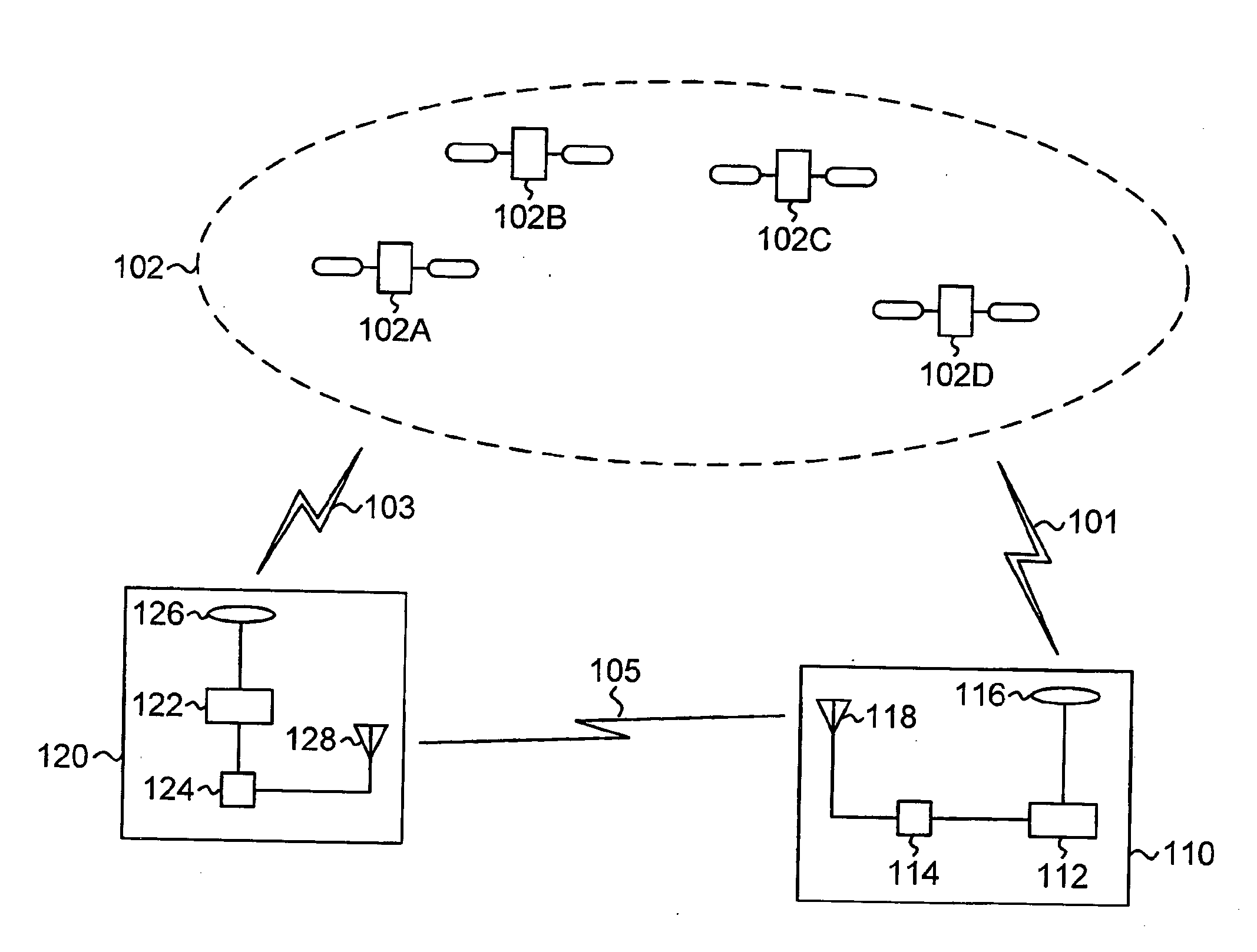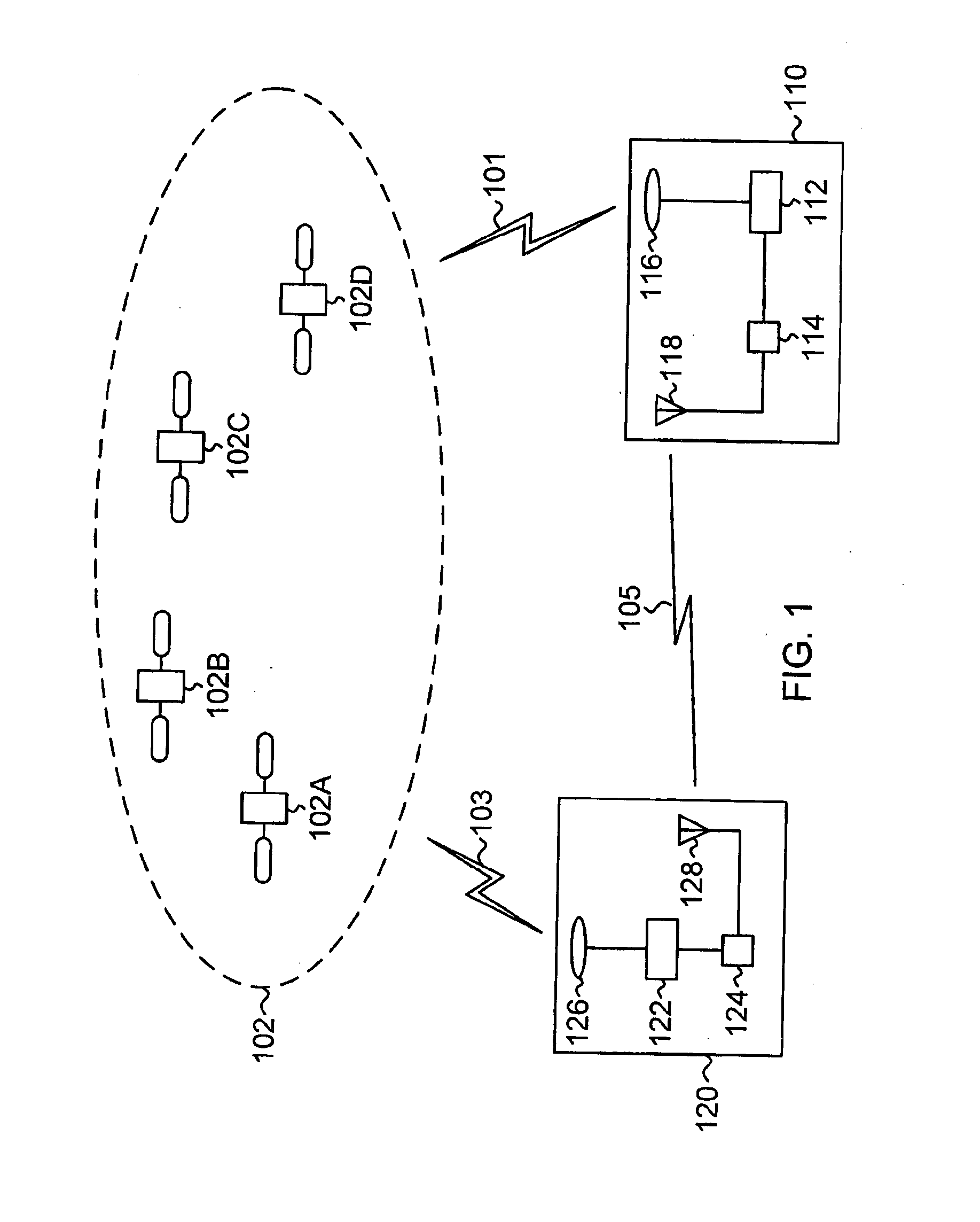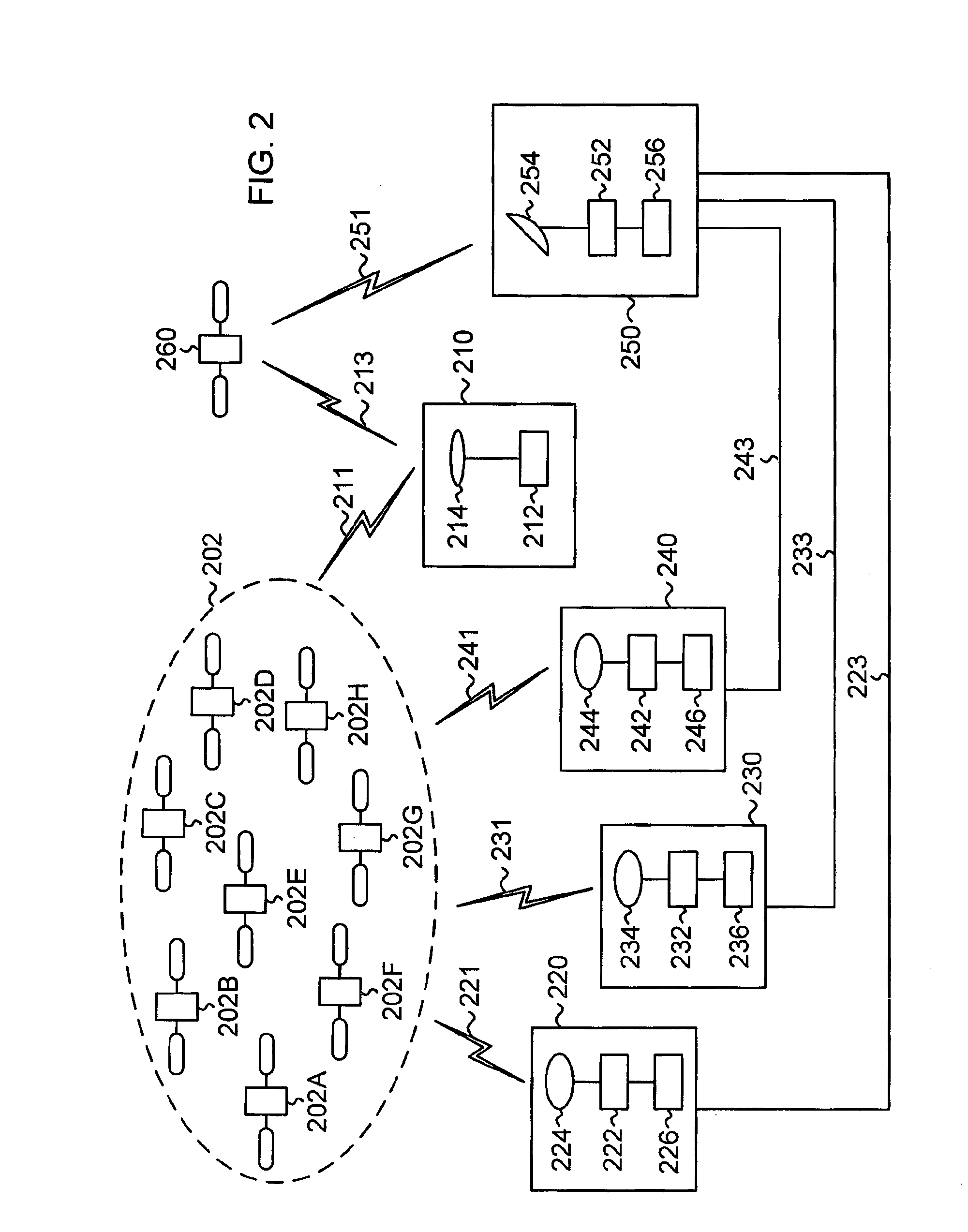The positioning quality of global navigation satellite system receivers
a global navigation satellite and receiver technology, applied in satellite radio beaconing, measurement devices, instruments, etc., can solve the problem that the navigation receiver can switch to a different operational mode with lower accuracy, and achieve the effect of improving the positioning quality
- Summary
- Abstract
- Description
- Claims
- Application Information
AI Technical Summary
Benefits of technology
Problems solved by technology
Method used
Image
Examples
example 1
[0128]This example illustrates Variant 1 of building the adaptive nonlinear filter (see Table 1 in FIG. 4), when the receiver operates in the OmniSTAR mode and classification method (I) is used. Table 2 (FIG. 5) lists the available solution types (column 502) and the assigned AR values (column 504).
[0129]According to logic expressions (E5) and (E6), with classification method (I), at time intervals when AR=3, the smoothed estimates of coordinates are generated as extended estimates of coordinates. At time intervals when AR=1, the smoothed estimates of coordinates are generated by the closed loop. At time intervals when AR=2, the smoothed estimates of coordinates are generated either by the closed loop or as extended estimates of coordinates, depending on the previous AR value. Table 3 (FIG. 6) gives examples of values for the parameters of the functional transformation, if nonlinearity (E9) is used in the closed loop. Column 602 lists the parameters of the functional transformation....
example 2
[0131]This example illustrates Variant 2 of building the adaptive nonlinear filter (see Table 1 in FIG. 4), when the receiver operates in the OmniSTAR mode and classification method (II) is used. Table 4 (FIG. 7) lists the available solution types (column 702) and the assigned AR values (column 704).
[0132]According to logic expressions (E5) and (E6), with classification method (II), the smoothing loop will be closed only over time intervals when AR=1; for the other time intervals, extended estimates of coordinates are used as smoothed estimates of coordinates. Table 5 (FIG. 8) gives examples of values for the parameters of the functional transformation, if nonlinearity (E11) is used in the closed loop. Column 802 lists the parameters of the functional transformation. Column 804 gives the values for AR=1.
[0133]This example shows that Variant 2 of the adaptive nonlinear filter improves the accuracy and smoothness of estimates of coordinates under harsh operational environments by sele...
example 3
[0134]This example illustrates Variant 3 of building the adaptive nonlinear filter (see Table 1 in FIG. 4), when the receiver operates in one of two different modes (OmniSTAR and DGPS) and classification method (II) is used. Table 6 (FIG. 9) lists the available modes (column 902), the available solution types (column 904), and the assigned AR values (column 906).
[0135]According to logic expressions (E5) and (E6), with classification method (II), the smoothing loop is closed over time intervals when the solution types belong to the first accuracy rating (AR=1); for AR=2, extended estimates of coordinates are generated and used for the smoothed estimates of coordinates. Table 7A (FIG. 10) gives examples of values for the parameters of the functional transformation, if nonlinearity (E10) is used in the closed loop. Column 1002 lists two parameters, the limit threshold and the limit level. Column 1004 gives the values for AR=1.
[0136]Table 7B (FIG. 10B) gives examples of values for the t...
PUM
 Login to View More
Login to View More Abstract
Description
Claims
Application Information
 Login to View More
Login to View More - R&D
- Intellectual Property
- Life Sciences
- Materials
- Tech Scout
- Unparalleled Data Quality
- Higher Quality Content
- 60% Fewer Hallucinations
Browse by: Latest US Patents, China's latest patents, Technical Efficacy Thesaurus, Application Domain, Technology Topic, Popular Technical Reports.
© 2025 PatSnap. All rights reserved.Legal|Privacy policy|Modern Slavery Act Transparency Statement|Sitemap|About US| Contact US: help@patsnap.com



